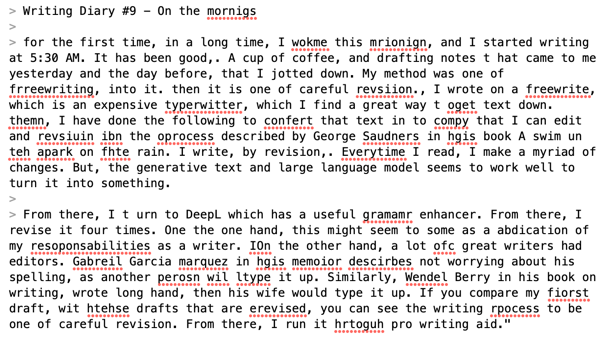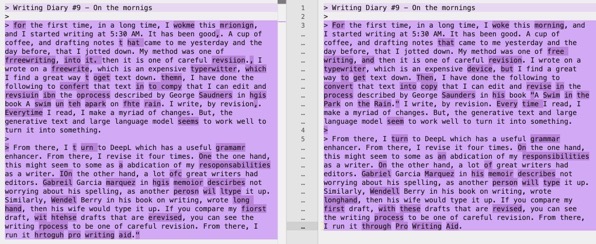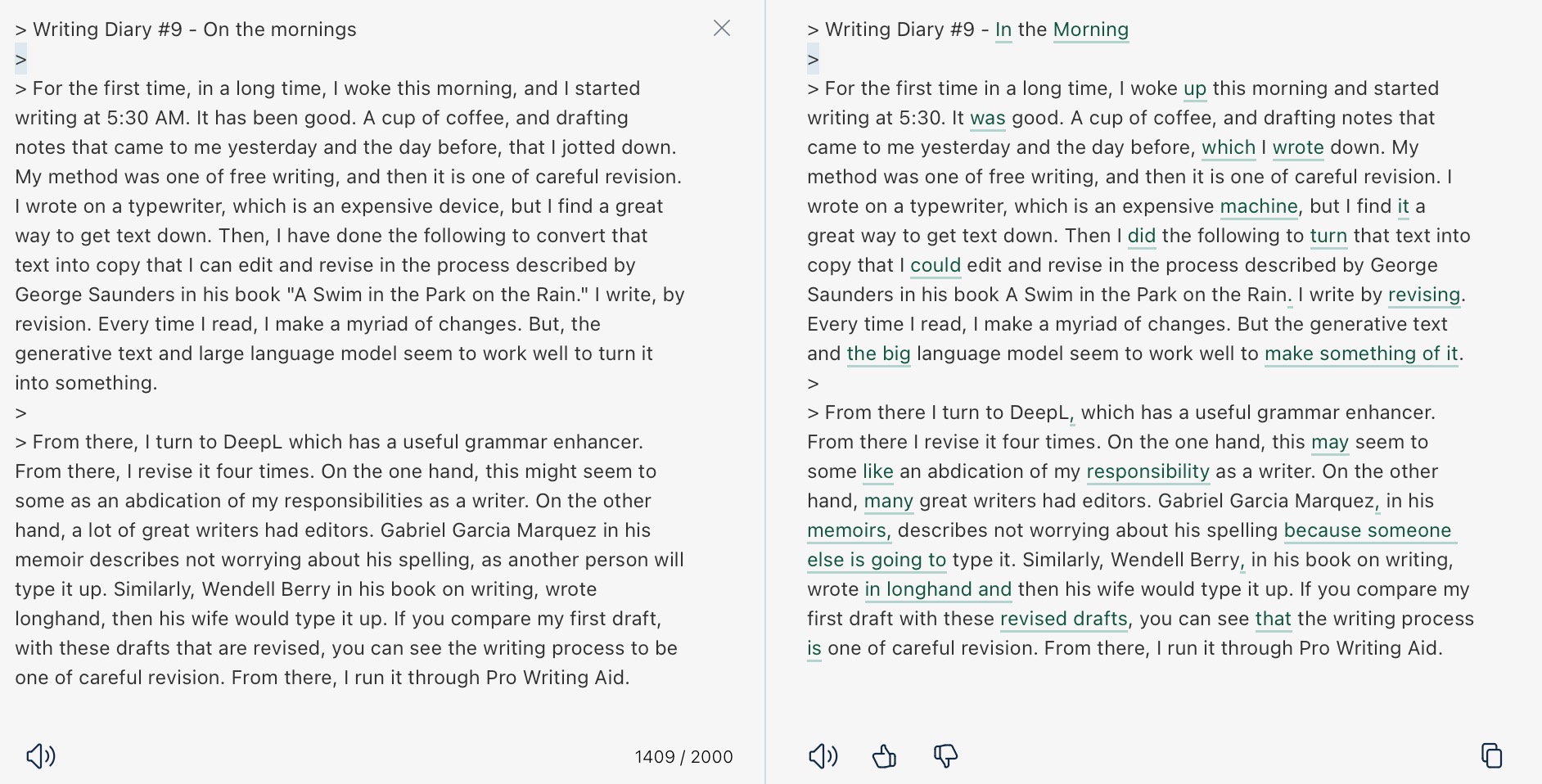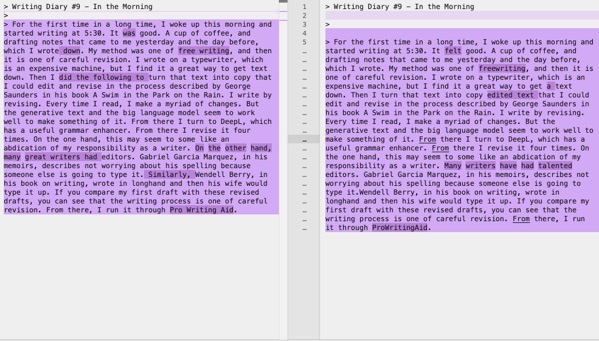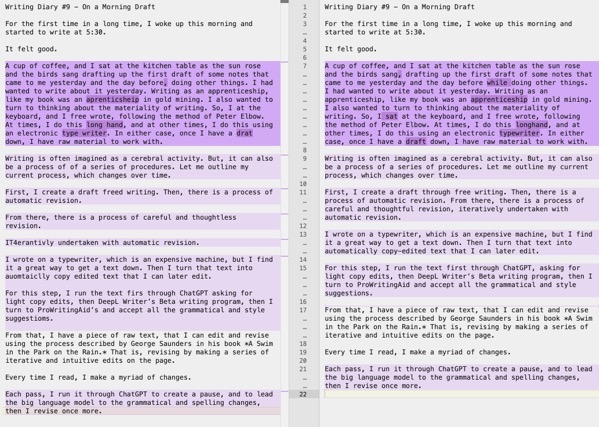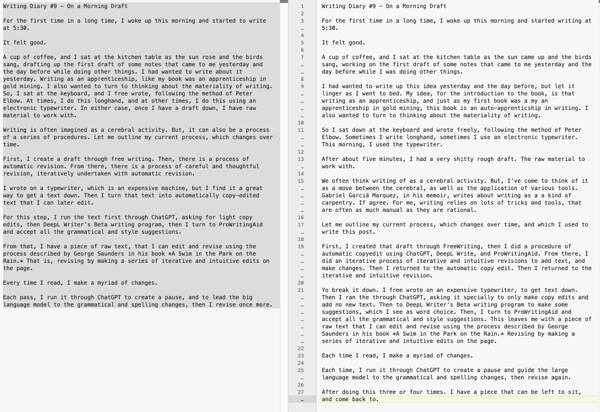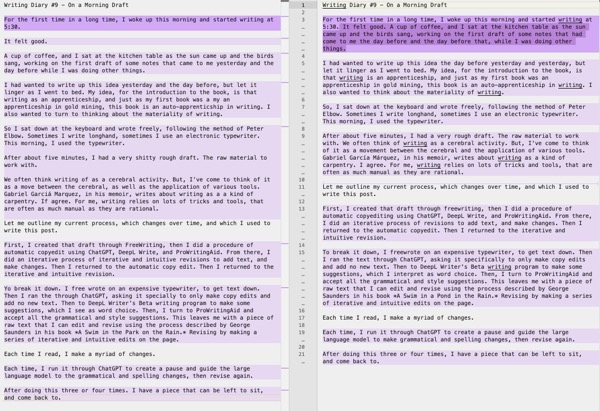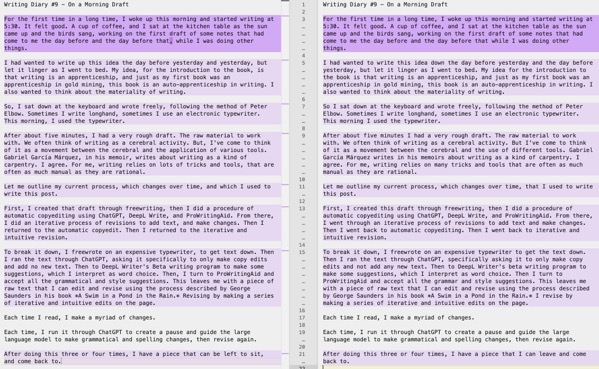As part of moving this blog to WordPress, I’m going through old posts. This one, from 22 November 2013, stuck with me:
Last night at a party, I chatted writing and rewriting with a friend visiting from Vancouver. She freelances as a copy editor. I told her about On Writing Well, and she echoed many of Zinsser’s suggestions—be short, use as few words as possible, and revise. She suggested an approach new to me: Look for hidden verbs by getting rid of ‘To Be.’ This morning revising a section on small-scale mining, I find the technique works well.
So, what is writing, at least for me, if it isn’t an exercise in applying various tricks and techniques like this? Revising to remove the verb ‘to be,’ removing the first person, eliminating the passive voice, cutting words, revising again, cutting, shortening—these are all tools.
Writing a first draft is one thing. But turning that first draft into something that sings and stringing it together with other texts into a longer piece is another. Part of the trick is the idea and theory. But, much of the trick, at least in the way I approach matters, is an exercise in the not-so-systematic application of a whole series of ticks and tricks.
Some I know and can explain, some are intuitive, some are embodied, and some are technical. My writing style, if I have one, seems to me to emerge in part from the application of these different techniques to writing. For example, a few days ago, I wrote about using online grammar tools—the serial application of tools: cut, edit out, rephrase, rewrite, add things, expand, read aloud, print out and mark up with a pencil. Over time, as the
Parul Sehgal describes George Saunders’ notes on writing in A Swim in a Pond in the Rain:
I’m making the book sound revoltingly technical. It isn’t. Saunders lives in the synapses—he looks at all the minute and meaningful decisions that produce a sentence, a paragraph, a convincing character. He offers one of the most accurate and beautiful depictions of what it is like to be inside the mind of the writer that I’ve ever read — that state of heightened alertness, lightning-quick decisions.
These tools and techniques, which I appreciate and use, are my grist for those tiny, meaningful decisions that I deploy in the synapses of writing.…
